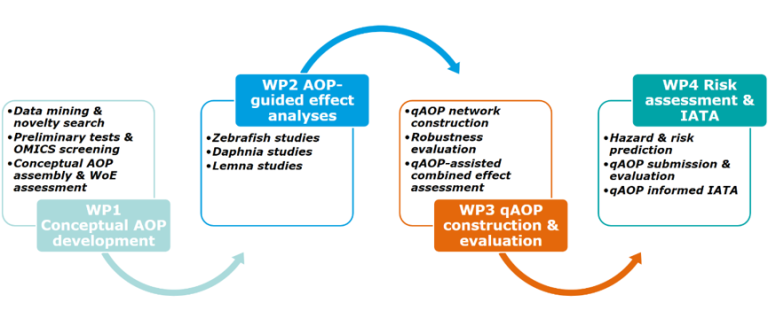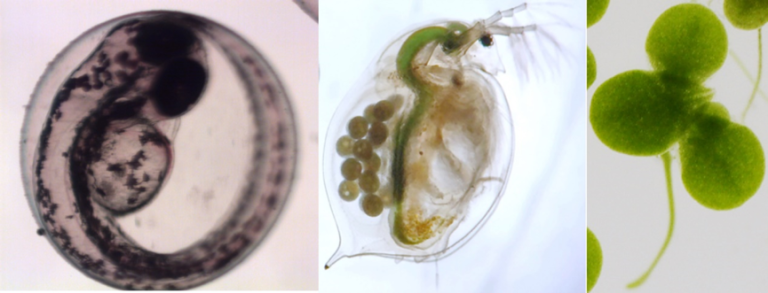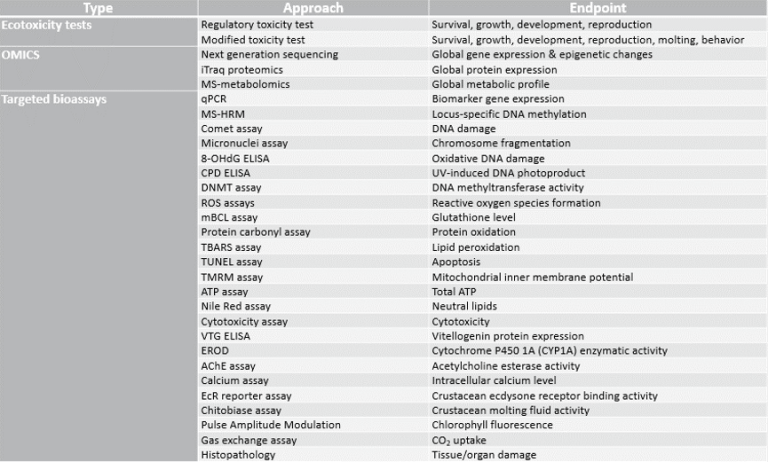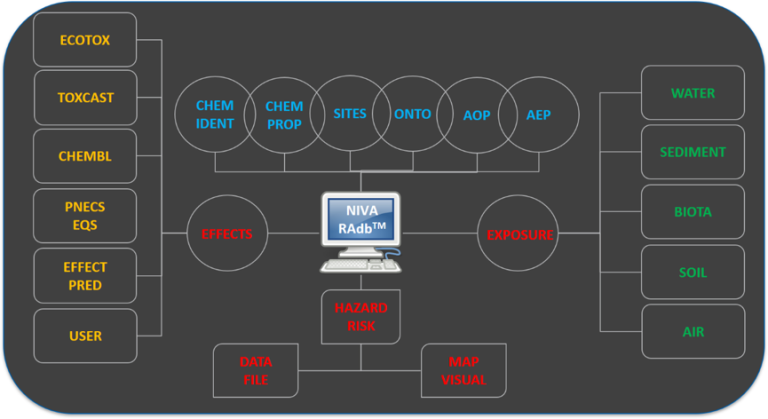Work packages

WP1 Conceptual AOP development
WP1 aims at developing conceptual AOP networks and associated testing strategies for large-scale experimental work (WP2) and qAOP development (WP3).
WP2 AOP-guided effect analyses
WP2 aims to generate new laboratory data to facilitate de novo qAOP construction in WP3.
WP3 qAOP construction and evaluation
WP3 aims to use advanced mathematical/computational approaches to develop qAOP network models and evaluate their robustness and applicability.
WP4 Risk assessment and IATA
Work package 4 aims to predict the hazards and risks of selected mitochondrial toxicants using the qAOP models, and propose a workflow for qAOP-informed IATA in regulatory decision-making.
Laboratory approaches
Three standard regulatory testing species that are representative of different trophic levels in the freshwater ecosystems, zebrafish Danio rerio, water flea Daphnia magna and duckweed Lemna minor (Figure 5) are used as prototypical species for qAOP development and risk assessment in RiskAOP. In addition, zebrafish cell lines will also be used for in vitro to in vivo extrapolation (IVIVE) and high-throughput screening (HTS) assays.

A biological effect assessment toolbox (Figure 6) will be employed for ecotoxicity testing in WP2. The toolbox contains a suite of standard and customized ecotoxicity testing protocols, targeted high-throughput (96- and 384-well formats) and untargeted high-content (HT) bioassays for quantification of biological effects at multiple levels of biological organization in the three testing species.

Computational approaches
Advanced model construction approaches such as machine learning, structural equation modeling and Bayesian networks will be applied to develop quantitative key event relationship (qKER) and qAOP models. The NIVA Risk Assessment Database (RAdb) will be used to integrate, extract, analyze and visualize data from both public and in-house sources (Figure 7) to support qAOP development in RiskAOP.
